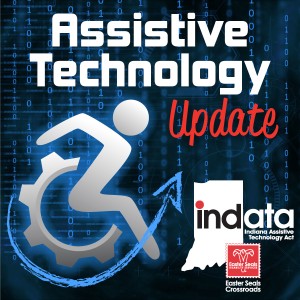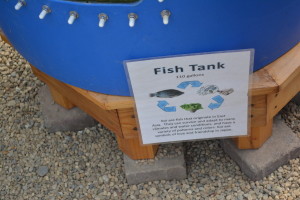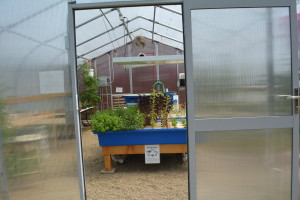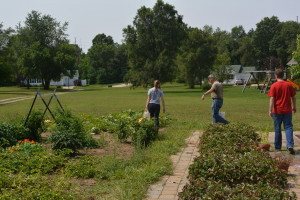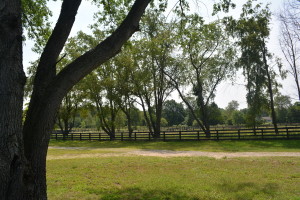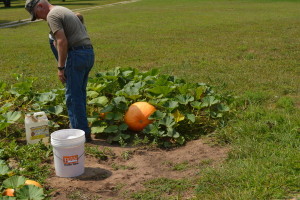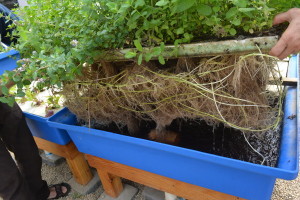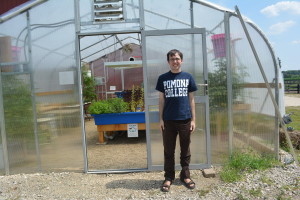Podcast: Play in new window | Download
Your weekly dose of information that keeps you up to date on the latest developments in the field of technology designed to assist people with disabilities and special needs.
Show Notes:
Green Bridge Growers: http://www.greenbridgegrowers.org/ | Chris Tidmarsh & Jan Pilarski
Take our listener survey: www.EasterSealsTech.com/feeback
BBC News – Live subtitles: How smart technology could help deaf people http://buff.ly/1oN7gNg
TFL Webinar: On Your Mark, Get Set, PLAY! Exploring AT for Living and Adapted Recreation – Wed Aug 27 @ 2:00 PM EST http://buff.ly/1pO7OBB
Why iPad is the Ideal Learning Tool for the Blind & Visually Impaired http://buff.ly/1pO7Qt8
A Summary of Accessibility Standards for Federal Outdoor Developed Areas – United States Access Board http://buff.ly/1pO7e6G
Kurzweil Educational Systems Rebrands Company with New Name, Logo, and Streamlined Product Set http://buff.ly/1pO5Hh3
4 Top Travel Tips for People With Arthritis http://buff.ly/1oN35kB
App: Write About This www.BridgingApps.org
Take our listener survey: www.EasterSealsTech.com/feeback
——————————
Listen 24/7 at www.AssistiveTechnologyRadio.com
If you have an AT question, leave us a voice mail at: 317-721-7124 or email tech@eastersealscrossroads.org
Check out our web site: https://www.eastersealstech.com
Follow us on Twitter: @INDATAproject
Like us on Facebook: www.Facebook.com/INDATA
;——-transcript follows ——
CHRIS TIDMARSH: Hi, this is Chris Tidmarsh, the cofounder of Greenbridge Growers.
JAN PILARSKI: And this is Jan Pilarski.
CHRIS TIDMARSH: And this is your Assistive Technology Update.
WADE WINGLER: Hi, this is Wade Wingler with the INDATA Project at Easter Seals Crossroads in Indiana with your Assistive Technology Update, a weekly dose of information that keeps you up-to-date on the latest developments in the field of technology, designed to assist people with disabilities and special needs. Welcome to episode number 168 of Assistive Technology Update. It’s scheduled to be released on Friday, August 15 of 2014.
I’m super excited about my interview today. I got to meet Chris Tidmarsh and Jan Pilarski in South Bend, Indiana.They are a group called Greenbridge Growers which is a micro-enterprise for people with autism. We’ve got some stories from the BBC news about Google glass being used to help people who are deaf with sign language, a webinar from Tools for Life coming up on accessible play, interesting information coming from the access board about standards for outdoor developed areas for hiking and camping and those sorts of things, Kurzweil Educational System is getting a new look and a new name and some travel tips for people who have arthritis.
We hope you’ll check out our website at www.eastersealstech.com. Call our listener line at 317-721-7124, or drop us a note on Twitter at INDATA Project.
Love our show? Visit eastersealstech.com/feedback. Take a survey. Let us know what you like and what you don’t. We’re looking forward to your input on how to make the show even better. Www.eastersealstech.com/feedback.
From the BBC news, there’s an article entitled, “Live subtitles: how smart technology could help deaf people.” It’s by William Major and he talked about the fact that there’s all kinds of new technology to make it easier for people who are deaf or hard of hearing to have life stop listening transcripts of the conversations that are going on around them. This particular one deals with Google glass. He had the opportunity to try a system that operates on Google glass, a wearable technology, depositions the screen above your right eye. He tried it out in a meeting where they stuck a tablet computer in the middle of the table and the people in the room had a conversation. He used the service called My Cap that’s a remote captioning service that works on lots of platforms including Google glass. He said it was miraculous how while looking through the Google glass technology, it seemed that there was a screen off in the distance that was translucent and he was able to get crisp, easy to read captions right there live during the conversation.
Now, he did say that after a while his excitement was kind of overtaken by fatigue. It’s not something that he does regular basis so he found the activity to be visually fatiguing. The article goes on to talk a little bit more in detail about the future of this technology and how companies like Samsung and Microsoft are developing technology that might play into this. In the end, he decided that there’s lots of cool technologies and this is a first and he has seen lots of first in his life, but he still prefers old-fashioned technology like the sign language interpreter. He says in the article here, “They are temperamental and they might make mistakes too, but they are fast, adaptable, portable, and they don’t need tech support when things go wrong.” I’m going to encourage you to check out this story on BBC.com. I’ll pop a link in the show notes and you can learn how Google glass may become a new option for folks who are deaf and need to have life subtitles.
The headline reads, “On your mark, get set, play! Exploring AT for living in adaptive recreation.” This is a webinar that’s going to happen on Wednesday, August 27 from 2 PM to 3:30 PM Eastern Standard Time and it comes out of our friends at Tools for Life which is George’s Assistive Technology Act program. Martha Rust and O’Ree Crittendon are going to be talking about accessible recreation. They’re going to talk about some recent research that sheds light on the gaps and the needs of recreation for folks with disabilities. The people in the webinar are going to learn a lot recreational activities that can be done within the home or with a group. They are also going to talk about adaptive sports, devices, and socialization opportunities that can help make a difference in the lives of folks with disabilities. I’ll pop a link in the show notes over to the registration page.There is no cost to attend and you can learn more about how to have a more adaptive recreation experience. Check our show notes.
Our friend Andrew Liebs is the guide for assistive technology over at about.com. He has interviewed Tara Mason who is a teacher of the blind and visually impaired at Texas Tech University about why the iPad is an ideal learning tool for folks were blind or visually impaired. Some of the questions that he gets to our since iPads are so visually stunning, why and how can they be helpful for folks who are blind or visually impaired? He asks what third-party apps would she recommend that are installed on the iPad as somebody who is blind or visually impaired? He gets to the topic up is the iPad robust enough to replace or be equivalent to a computer? Then he talks about funding and does vocational rehabilitation in general purchase iPads these days? He talks about pricing and he talks about whether the iPad mini offers any advantages over the standard iPad for somebody who is blind or visually impaired. Interesting article with some difficult questions that Andrew is asking here. I’ll invite you to check that out by following the link on our show notes. I’ll pop a link in their new committee article from Andrew at about.com.
I love camping and hiking and all things outdoors. Recently the access board has released a new set of standards for outdoor areas. It’s called “Outdoor developed areas: a summary of accessibility standards for federal outdoor developed areas.” Now my understanding is that this technically only applies to federal parks and recreation areas and those kinds of federal facilities but they are great guidelines for other areas as well. Some of the areas the guidelines include are trails and trailheads, how to make outdoor recreations more accessible with accessible access routes, more accessible camping facilities. It talks about things like the area for accessible vehicles, how big they should be, talks about picnic facilities and how things like grills and picnic tables need to be made accessible and how many in the park need to be made accessible. Other areas include accessibility guidelines on viewing areas, beach access, all kinds of other stuff. It’s that time of the year when I’m hoping everybody is enjoyed some time outside and if you’re interested in how federal recreation areas are going to be made more accessible, check out this link in our show notes.
Are you a user of Kurzweil Educational Systems products? Kurzweil, the company, is going to rebrand. They have a new name. According to the wall street journal earlier this week, Kurzweil Educational Systems is now known as Kurzweil Education. Not only are they getting the new name, but they’re going to have a new tagline, new logo, indicating here a tighter product portfolio. That’s because they recently divested themselves of the Intelitools product line. Their new tagline is “Unlocking potential.” According to John Campbell, the CEO of Cambium Learning Group come he says, “Our mission has always been to provide tools and resources that allow all learners to actively engage in authentic learning experiences in the ways that work best for them.” It’ll be interesting over the next few weeks and months to see what other developments happen here with Kurzweil, but in the meantime they’ve got a new name, Kurzweil Education. I’ll pop a link in the show notes over to the Wall Street Journal and you can learn more about this new change.
From Everyday Health we have an article here from Linda Schrager. Is called, “The organized caregiver: four top travel tips for people with arthritis.” It’s that time of the year when a lot of people, especially here in the United States are finishing up their last summertime vacations before they head back to work and school and those sorts of things. Some of the tips that are included here by Ms. Schrager who is an occupational therapist include picking the right destination. She talks about traveling within your capabilities. If you’re not a rock climber, maybe don’t sign up for a rock climb but maybe a month top helicopter excursion will give you the same you without all the effort. She talks about choosing the right accommodation picture says, “While you’re traveling, it’s important to get a good night’s sleep, so do so in a way that’s accessible. All hotels in the US have to comply with the Americans with Disabilities Act, but their levels of accessibility may vary from place to place.”
Some of the things she suggest you consider is how close is the room to the restaurant, the pool, the beach, the elevator. Are the bathrooms fully accessible, which means they have walk-in showers, grab rails and those sorts of things. Is the room big enough for a wheelchair and is there accessible parking nearby. Tip number three is packing right and packing light. She talks about the fact that you need to take only the things that you think you’re going to need. You to look at the weather in advance back make sure your packing in layers and packing in such a way that you can deal with the different kinds of whether that’s going to be there on your trip.
She also talks about the fact that if you have small adaptive equipment like folding preachers, special eating utensils, blowup raise toilet seats, those kinds of things, consider taking them with you. If you’re on a trip and you have some arthritis or other symptoms kind of become a problem, if that’s how those adaptive aids while you’re there.
Lastly, number four is pick the right mode of transportation. She mentions that for air travel, the Air Carrier Access Act prohibits discrimination based on disability and has some tips on how to make sure that your air flights will be accessible as possible. She suggests may be paying a little more and not doing a layover which means changing planes if that’s a difficult thing for you. She gives some details on trains and buses and cruise ships and some of the accessibility features that are available for those. She also talks about the fact that if you’re in a car, you have lots more freedom and lots more independence and maybe if you’re going to rent a car, treat yourself to one that has lots of power control just for a little less effort. I’m going to pop a link in the show notes over to everydayhealth.com and you can read more details on these top travel tips for people with arthritis.
Each week, one of our partners tells us what’s happening in the ever-changing world of apps, so here’s an app worth mentioning.
>> This is Amy Barry with BridgingApps and this is an app worth mentioning. Today’s app is called Write About This. This app is a visual writing prompt and creation platform, perfect for classrooms and families. With endless ways to respond and the ability to craft custom photo props, it will kickstart any writing activity. So if you’re looking for a way to increase your students writing skills, check out Write About This. You can try it before you buy it with a free version to see if the app is right for you or your students.
With this app, the saying “A picture is worth a thousand words” is the best way to describe it. In the full version, you’re given 125 pages and 375 props. Categories range from the common core standards, informational text, to writing about feelings or customizing the app with your own category. Options available to choose from our careers, animals, transportation, fun friends, etc. Users choose a category and then select another photo that provides a prompt.
The app can be individualized using a variety of prompts within the settings. Prompts range from text prompts, voice prompts, create custom ones to your level of difficulty. Prompt levels go from one to three, allowing you to use the same theme but customized level of difficulty based on the writer’s capabilities.
After a student completes their story, they can record story and email it to family members or teachers. The voice is not saved unless the receiver also has the Write About This app.
Our students love this app. They can create a place or save their Write Abouts and add their photo and name, helping them understand what an author is. Each student can be encouraged to use the app weekly to expand his or her writing capabilities. Hearing their story helps them to revise and edit independently. The beauty of this app is its ease of use and endless opportunities for creative writing. We have used Write About This with writers of all abilities. The Write About This is $3.99 at the iTunes Store. This app can be used on iOS devices. For more information on this app and others like it, visit BridgingApps.org.
WADE WINGLER: So normally when I record the show, I’m sitting in a studio surrounded by walls with sound dampening equipment and is little bit stuffy and there sometimes. There’s a glass window and sometimes people walk by and look at me and wave at me and try to distract me. That’s always kind of a hoot.
Today I am sitting in the very northern part of central Indiana, north of South Bend, just a little bit near the Michigan state line. I see blue skies and clouds and I see beautiful trees and flowers and somebody squirting a garden hose on some pumpkins. I see a greenhouse and horses and there is a guilt right over there as well. I am on the grounds of Greenbridge Growers which is in the South Bend, Indiana, area and I am sitting at a picnic table. It’s absolutely beautiful outside. With Chris Tidmarsh and Jan Pilarski, the cofounders of Greenbridge Growers. It’s a farm. It’s a garden. But it’s not your average farm or your average garden. There is lots of cool stuff going on here that has to do with business and enterprise and disability in a way that I really didn’t expect. I want to introduce my guest. Chris Tidmarsh, how are you?
CHRIS TIDMARSH: I’m good. How about you?
WADE WINGLER: I’m doing great. Thanks for asking. Jan, how are you?
JAN PILARSKI: Hi, Wade. Nice to be here with you.
WADE WINGLER: Thank you. Jan, you’re mom so you’re here and I think standing side-by-side with Chris on a pretty regular basis for this project. I’m glad to have the both of you here for the interview. Chris, I’m just going to jump right into this and ask you to tell me the history of Greenbridge Growers. How did you guys get started here?
CHRIS TIDMARSH: When I was in college, I became very interested in environmental studies and environment issues. After I graduated, I did a few internships at different organic farms in Indiana to gain experience. I really liked working at the farms, and I became convinced that I wanted to go in to farming as a career. We got the idea for going into aquaponics when we visited Growing Power in Milwaukee. We thought that would be a good model to use here in South Bend. We attended several training sessions at Growing Power and that’s how we learn to put aquaponics into action.
WADE WINGLER: Excellent. So your personal interest in this came from that experience after college mostly, right? Have you been in the garden since you were a child?
CHRIS TIDMARSH: Well, we used to have a garden at St. Mary’s College right near South Bend. We grew some produce there for our family. My interest in farming is recent in the last several years since college.
WADE WINGLER: That’s great. I know that your interest is recent and your energy level and enthusiasm for this is very high. I can tell because we spent a little time this morning walking around the grounds. Folks who are regular listeners of our show might wonder why we’re talking about gardening. Usually our show is about disability in technology. Can you tell me a little bit about disability figures into Greenbridge Growers?
CHRIS TIDMARSH: Green bridge is meant to employ people on the autism spectrum. Unfortunately, 90% of people on the autism spectrum are either unemployed or underemployed. Green bridge tends to address this problem. We’re here to get people with autism the chance to use her skills and an accepting environment.
WADE WINGLER: That’s excellent. I think it’s really boring. So tell me a little bit about the people who are involved.
CHRIS TIDMARSH: Let’s see. Hannah and Friends is the organization, the site that we are on right now. We have several residents houses here with about four people each, as well as an activity center for people to come in and do fun activities like arts and crafts or game time. Hannah and Friends has a partnership with Greenbridge Growers where they allowed us to build a greenhouse on the side of Hannah and Friends to grow aquaponically. I did an AmeriCorps program here at Hannah and Friends. The residents are participants at Hannah and friends, helping the greenhouse. In addition to Hannah and Friends, we’ve also had help from certain groups at Notre Dame. Is a couple of groups called esteem and another one is fish for fellow Irish social hub.
WADE WINGLER: Chris, I know that one of the people that’s involved is your mom, Jen, and she’s here with us today. Jan, tell me a little bit of your perspective about why this is important and the folks that are involved.
JAN PILARSKI: Well, green bridge gives us a whole lot of hope. Chris was someone who we felt got great services and was educated so well to the schools in South Bend and even graduated college a few years ago. The one piece of the equation was that accessing a job in the traditional workforce is difficult for a young person with autism. Like Chris said, 90% are unemployed or underemployed. That happened to him despite his interest in science and wanting to make a difference in the community. Things just didn’t work out in that way. So it looked to us that one of the best prospects for young adults with autism who have aged out of the system and are looking for ways to use their gifts was to be entrepreneurial about employment and putting together Chris’s interest and background and growing with a talented workforce. Aquaponics seemed a great skill match because of the precision, the detail, the attentiveness to work. We sure that with Hannah and friends and they were very excited to involve their participants in training and learning the work.
WADE WINGLER: Based on the tour that we did a little while ago and I got to kind of look under the hood of the operation, aquaponics is a system where you have plants and fish kind of working in concert to create produce. Is that right, Chris?
CHRIS TIDMARSH: That’s right. The waste from the fish is used as the trans for the plants and the plants clean that water and cycle it back up into the fish tank. It’s a closed loop system.
WADE WINGLER: So the end result is what? What do you produce out of this aquaponics system?
CHRIS TIDMARSH: We produce produce like basil and mint and some lettuces.
WADE WINGLER: And who is the customer for those?
CHRIS TIDMARSH: We have a few customers in the area such as Whole Foods. We might also be selling to a couple restaurants in the area as well.
WADE WINGLER: Excellent. So you’ve had to figure out a lot of technology related to managing the fish and their habitat. We talked about the fact that you have to Minnesota chemistry related to the plants and fish as well. Chris, is a technology that specific to disability that you’ve employed here to make this more successful project?
CHRIS TIDMARSH: Yeah. For example, we have an app called Podio that helps us keep track of our information. Were also hoping out some point to use plant tracking solders that we can track the growth of our plans and germination rates. People with autism aren’t often interested in technology so these tools are helpful for people with autism. There’s also hands-on learning, side-by-side learning, people talking through their problems so it’s Apple for people with autism.
WADE WINGLER: Did you mention something about visual schedules or books, manuals, those kind of things?
CHRIS TIDMARSH: We have a manual for helping the people at the greenhouse to understand what they need to do.
JAN PILARSKI: All the steps that are involved in the different tasks, all the seeding, the transplanting, the harvesting, very visual. People who are training with us are all our models and they posed, but it just helps show and reinforce all the work that is to be done.
WADE WINGLER: So I’m sitting here recording in our early August and things are in bloom and their stuff that’s obviously going to become products are going to sell, produce to supermarkets and restaurants and those sort of things. I have to think about the future a little bit, not one of the future of the strong season but the future of Greenbridge Growers in general. Chris, if I asked you to learn into your crystal ball and make some predictions on where things are going, what would you say?
CHRIS TIDMARSH: I say that we hope to one day be able to employ people across the South Bend area and possibly eventually throughout the state. We’re already begin to sell our produce at farmers market so that people do to know us. We’re hoping that by selling at farmers markets, will be able to get to know our people and expand more.
WADE WINGLER: The idea is you create demand and instead of one greenhouse and a small plot, then you move into more greenhouses, more people come and skills of thing. Is that correct?
CHRIS TIDMARSH: That’s right. Were actually looking for our first commercial greenhouse right now. Were still in the process of looking for land but we’re hopeful that soon will be able to find some land.
WADE WINGLER: Chris or Jan, tell me a story about somebody whose life has been impacted by what you’re doing here with Greenbridge Growers. Chris, I think it’s fair to say that your life has been impacted. Tell me a story.
CHRIS TIDMARSH: One of the people here at Hannah and friends is a young man named Brandon. He really liked to come in and feed the fish and taking care of them. He trained with us and had a special interest in seeing things grow but especially the fish. Keynotes a lot of things about the fish that other people wouldn’t have noticed. He saw the greenhouse is a great way to participate and help things grow.
WADE WINGLER: That’s a great example. What does Greenbridge Growers mean to you?
CHRIS TIDMARSH: I see green bridge as a way for me to use my skills and my interest in farming and at some point in the future as a source of employment for me as well.
WADE WINGLER: Mom, same question.
JAN PILARSKI: I think that as a parent and helping a venture like this get launched, I see it as a sign of hope, that if things don’t work out in one way of life than create something new. Hopefully it can be a model for other businesses of other kinds and also show the terrific capabilities of young adults, young autistic adults, and what other people with disabilities can do all around the state. It’s hope. It’s a way of sharing that with others and showing what people can do.
WADE WINGLER: Excellent. Chris, if people are inspired by a story and I know that they are going to be, wherever they go online to learn more? If they wanted to learn more about green bridge, if they wanted to reach out to you, what would you suggest in terms of contact information?
CHRIS TIDMARSH: We have a website. It’s Greenbridge Growers.org. We also have a Facebook page, which is Facebook.com/GreenBridgeGrowers. I think we also have a twitter.
JAN PILARSKI: We’re on Twitter, Pinterest, and Instagram as green bridge grow.
WADE WINGLER: So you’re telling me if you put Greenbridge Growers are green bridge grow into most social media are going to find you guys.
JAN PILARSKI: That’s right. We’d be delighted to connect with people all around the state.
WADE WINGLER: Thanks. Chris, any closing thoughts?
CHRIS TIDMARSH: I’m really excited to see this project grow. I’m looking forward to being able to sell our produce and seeing our product developed.
WADE WINGLER: Chris Tidmarsh and Jan Pilarski are the cofounders of Greenbridge Growers in beautiful South Bend, Indiana. Chris, Jen, thank you so much for being with us today.
CHRIS TIDMARSH: Thank you, Wade.
JAN PILARSKI: Thanks, Wade. It’s a pleasure.
WADE WINGLER: Do you have a question about assistive technology? Do you have a suggestion for someone we should interview on Assistive Technology Update? Call our listener line at 317-721-7124. Looking for show notes from today’s show? Head on over to EasterSealstech.com. Shoot us a note on Twitter @INDATAProject, or check us out on Facebook. That was your Assistance Technology Update. I’m Wade Wingler with the INDATA Project at Easter Seals Crossroads in Indiana.


